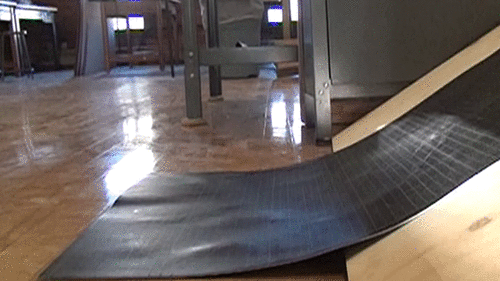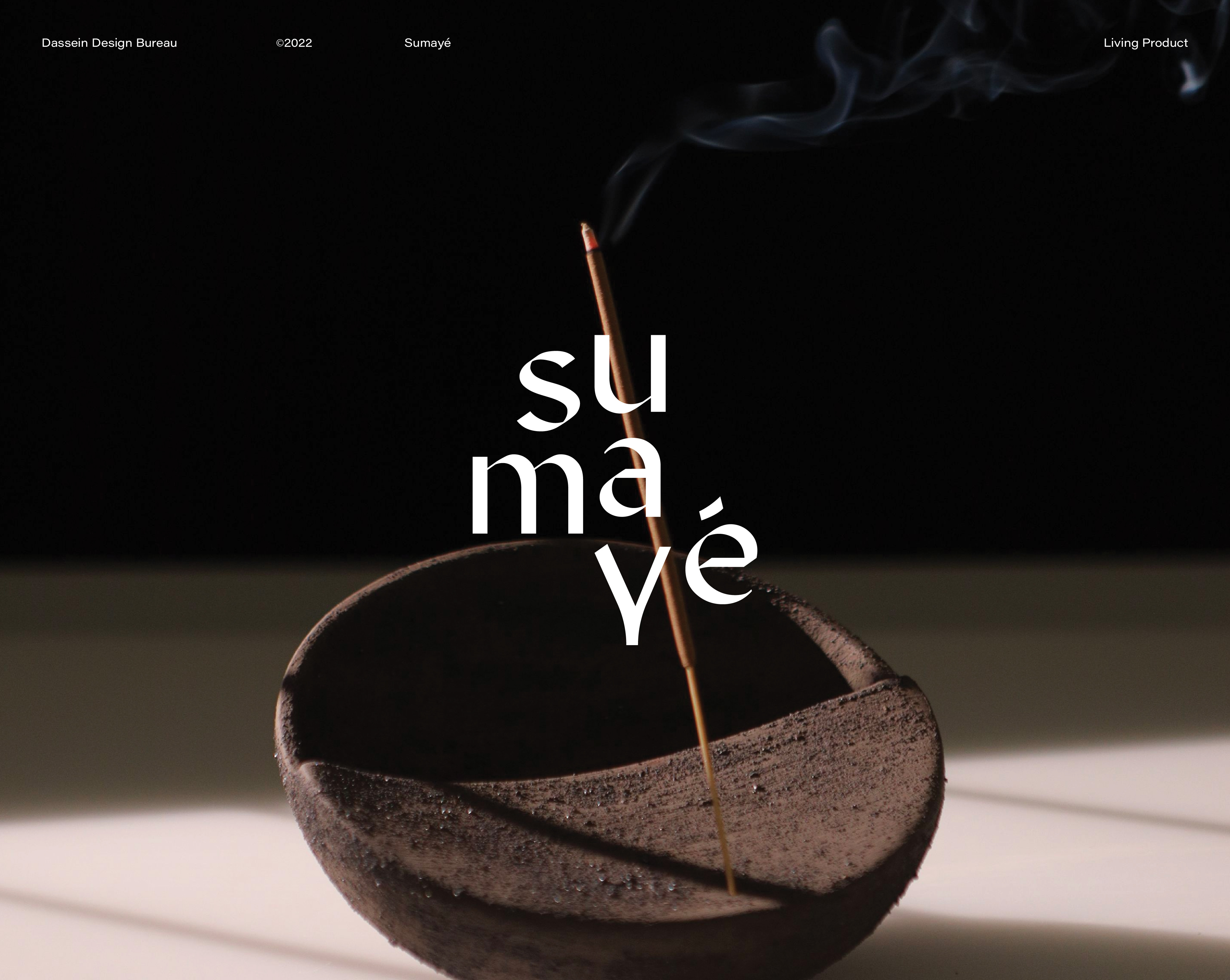Culici is a biomorphic wooden vehicle that expands the formal language of bent lamination techniques. During the ideation stage of the project, I realised that many bent laminated forms are unidirectional and exist as a single curved plane. To express the qualities of the technique in a different way, separate bent pieces are joined almost perpendicular to each other. The resulting form is dynamic and feels like a breathing creature. With wide set hind legs, a predatory face and a light, airy form it resembles a mosquito to me, hence its name.
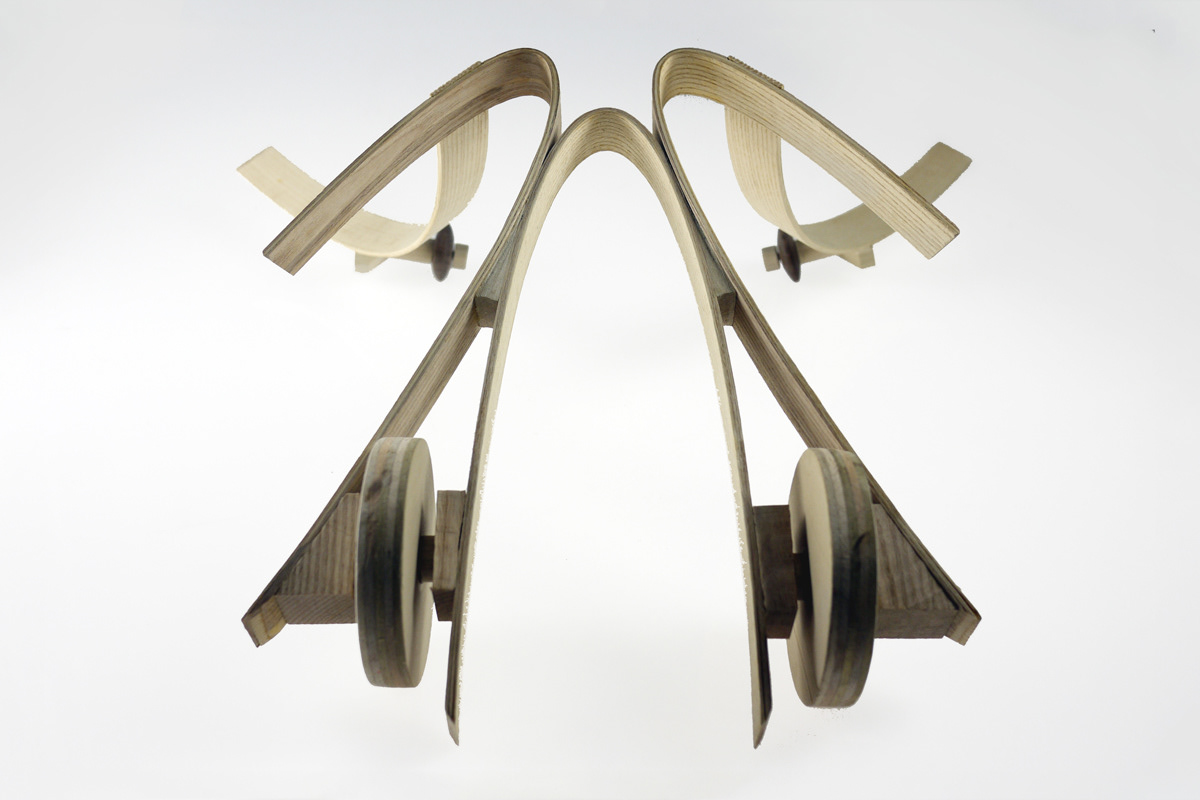

Culici in action:
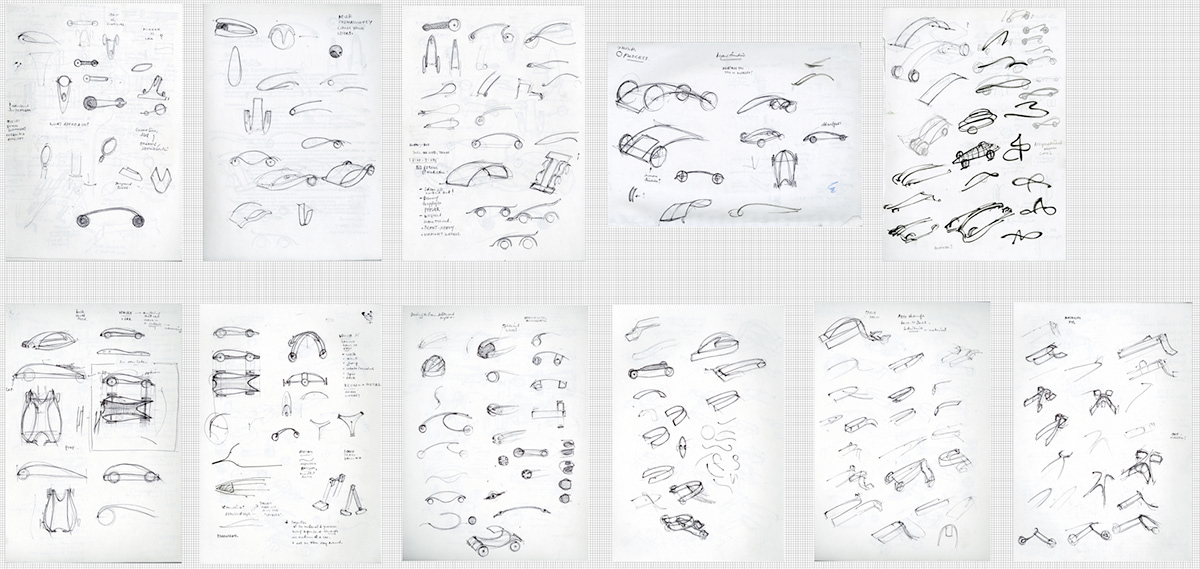
Culici was arrived at late in the ideation phase after I realised that previous ideas used a rather singular formal language.
After getting a rough idea of Culici through sketches, a quick prototype is made using bristol paper and tape. The final design of 5 parts requires only 2 unique curves, one parabolic, one circular. The geometry of Culici is mapped out in illustrator. The curves are printed in full scale, transferred onto a solid wood block and removed from the block, leaving a mould for the ash veneeers to be laminated in.

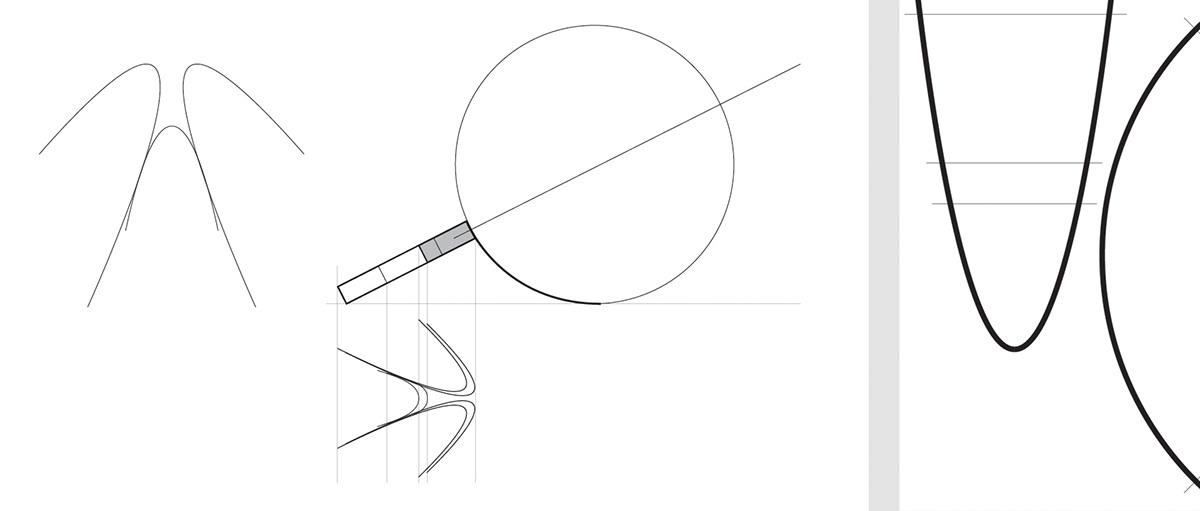
To achieve the tight parabolic curve, the ash veneers pieces have to first be soaked in hot water and left to dry. The individual parts are made by laminating 3 pieces 1/16" ash wood veneers in the wooden mould. After clamping the pieces in the mould for a day, the pieces are left to dry completely. The individual bent pieces put together with tape to ascertain the joint positions.


The front wheels accomodate Culici's aggressive incident angle to the ground. The curved hind legs act as a leaf suspension to attenuate shock. The back wheels are angled, further contributing to Culici's dynamic and fluid form.
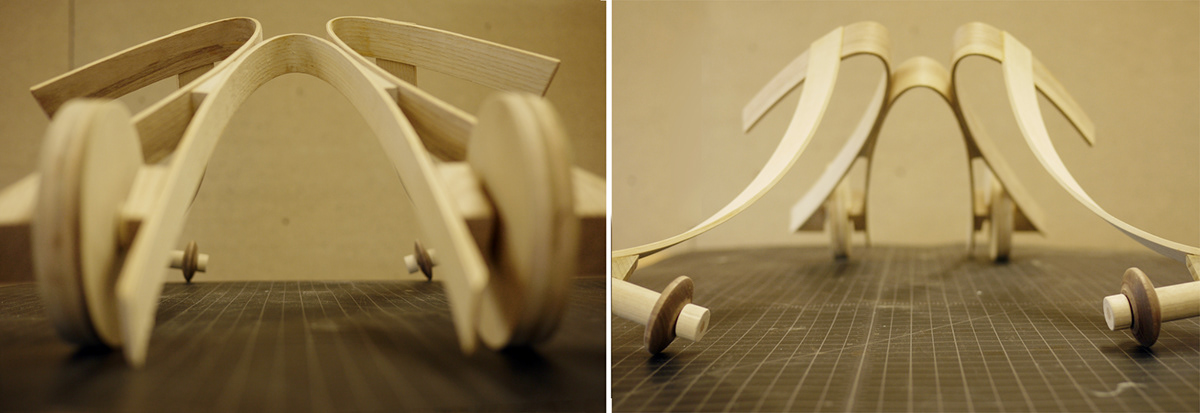

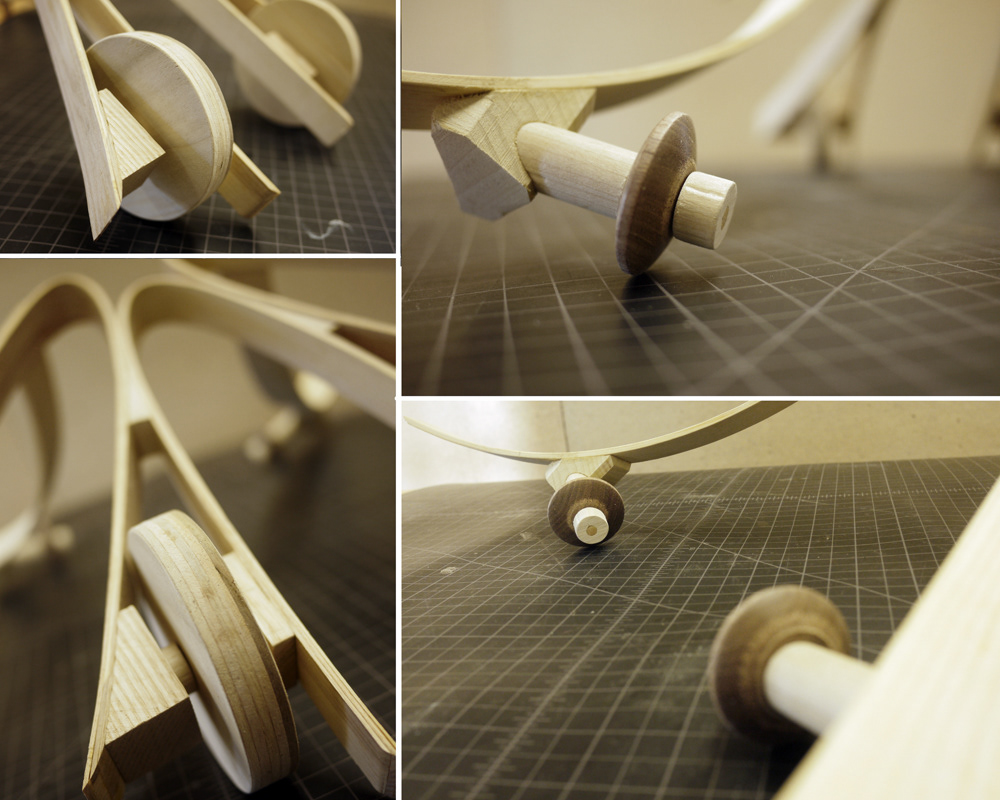
And finally here is Culici in slow-mo goodness:
